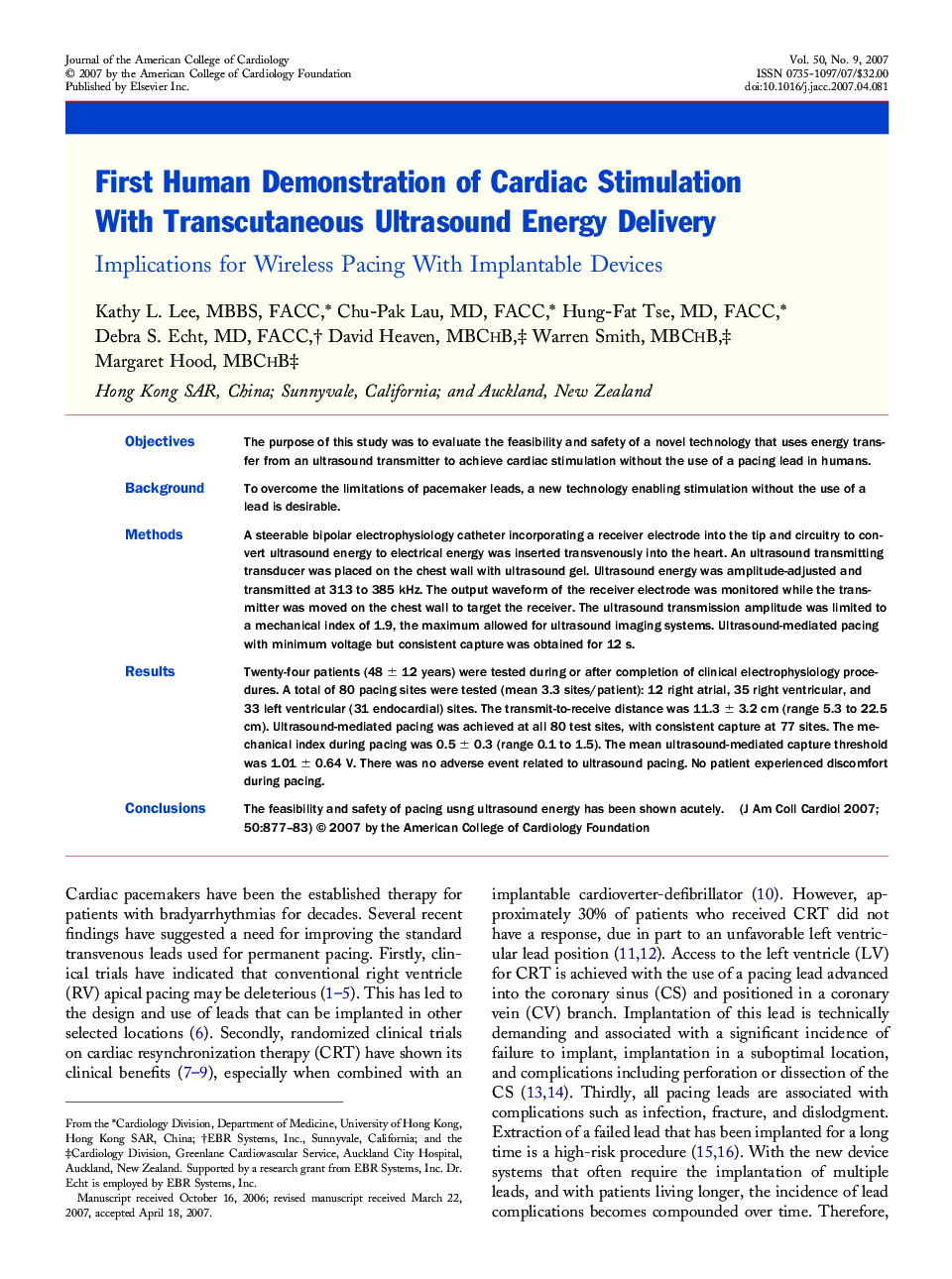| کد مقاله | کد نشریه | سال انتشار | مقاله انگلیسی | نسخه تمام متن |
|---|---|---|---|---|
| 2951045 | 1577459 | 2007 | 7 صفحه PDF | دانلود رایگان |

ObjectivesThe purpose of this study was to evaluate the feasibility and safety of a novel technology that uses energy transfer from an ultrasound transmitter to achieve cardiac stimulation without the use of a pacing lead in humans.BackgroundTo overcome the limitations of pacemaker leads, a new technology enabling stimulation without the use of a lead is desirable.MethodsA steerable bipolar electrophysiology catheter incorporating a receiver electrode into the tip and circuitry to convert ultrasound energy to electrical energy was inserted transvenously into the heart. An ultrasound transmitting transducer was placed on the chest wall with ultrasound gel. Ultrasound energy was amplitude-adjusted and transmitted at 313 to 385 kHz. The output waveform of the receiver electrode was monitored while the transmitter was moved on the chest wall to target the receiver. The ultrasound transmission amplitude was limited to a mechanical index of 1.9, the maximum allowed for ultrasound imaging systems. Ultrasound-mediated pacing with minimum voltage but consistent capture was obtained for 12 s.ResultsTwenty-four patients (48 ± 12 years) were tested during or after completion of clinical electrophysiology procedures. A total of 80 pacing sites were tested (mean 3.3 sites/patient): 12 right atrial, 35 right ventricular, and 33 left ventricular (31 endocardial) sites. The transmit-to-receive distance was 11.3 ± 3.2 cm (range 5.3 to 22.5 cm). Ultrasound-mediated pacing was achieved at all 80 test sites, with consistent capture at 77 sites. The mechanical index during pacing was 0.5 ± 0.3 (range 0.1 to 1.5). The mean ultrasound-mediated capture threshold was 1.01 ± 0.64 V. There was no adverse event related to ultrasound pacing. No patient experienced discomfort during pacing.ConclusionsThe feasibility and safety of pacing usng ultrasound energy has been shown acutely.
Journal: Journal of the American College of Cardiology - Volume 50, Issue 9, 28 August 2007, Pages 877–883